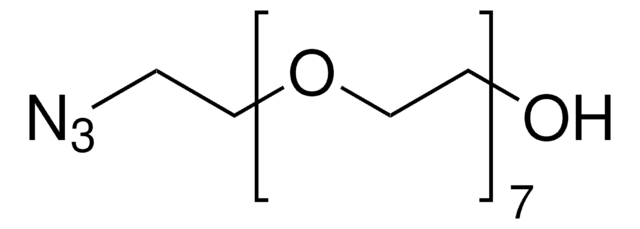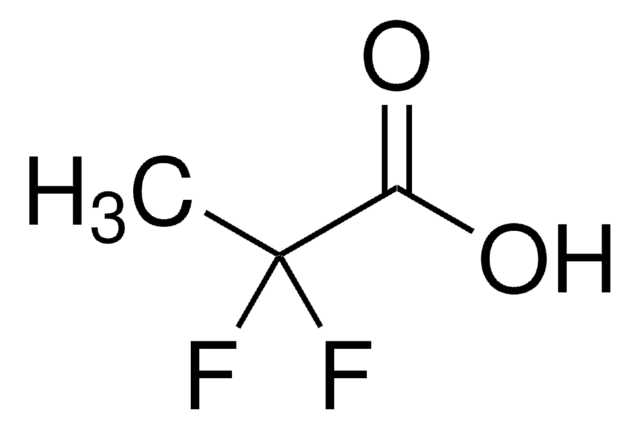726249
O-(2-Azidoethyl)nonadecaethylene glycol
≥95% (oligomer purity)
Synonym(s):
Azido-PEG (n=19)
Select a Size
About This Item
Recommended Products
Quality Level
Assay
≥95% (oligomer purity)
form
solid
storage temp.
2-8°C
SMILES string
OCCOCCOCCOCCOCCOCCOCCOCCOCCOCCOCCOCCOCCOCCOCCOCCOCCOCCOCCOCCN=[N+]=[N-]
InChI
1S/C40H81N3O20/c41-43-42-1-3-45-5-7-47-9-11-49-13-15-51-17-19-53-21-23-55-25-27-57-29-31-59-33-35-61-37-39-63-40-38-62-36-34-60-32-30-58-28-26-56-24-22-54-20-18-52-16-14-50-12-10-48-8-6-46-4-2-44/h44H,1-40H2
InChI key
FRLHZVCZJNPUMK-UHFFFAOYSA-N
Related Categories
Packaging
Storage Class Code
11 - Combustible Solids
WGK
WGK 3
Flash Point(F)
Not applicable
Flash Point(C)
Not applicable
Regulatory Listings
Regulatory Listings are mainly provided for chemical products. Only limited information can be provided here for non-chemical products. No entry means none of the components are listed. It is the user’s obligation to ensure the safe and legal use of the product.
JAN Code
726249-BULK:
726249-VAR:
726249-250MG:
Choose from one of the most recent versions:
Already Own This Product?
Find documentation for the products that you have recently purchased in the Document Library.
Customers Also Viewed
Articles
Circulatory half-life is a key success factor for new drugs. In this respect, PEGylation or PEG-ing—the modification of potential candidates ranging from non-peptidic small molecules to peptides and proteins, antibody fragments, aptamers, and saccharides or oligonucleotides with polyethylene glycol chains—offers numerous advantages.
Prof. Randal Lee discusses iron oxide magnetic nanospheres and nanocubes design considerations for biosensing applications.
Kanjiro Miyata (The University of Tokyo, Japan) provides insights on the rational design of polymeric materials for “smart” oligonucleotide delivery.
Active Filters
Our team of scientists has experience in all areas of research including Life Science, Material Science, Chemical Synthesis, Chromatography, Analytical and many others.
Contact Technical Service![2-[2-(2-Azidoethoxy)ethoxy]ethanol solution ~0.5 M in tert-butyl methyl ether](/deepweb/assets/sigmaaldrich/product/structures/374/007/eea7ca74-41e4-4aac-af71-c93c37ec0a5a/640/eea7ca74-41e4-4aac-af71-c93c37ec0a5a.png)







